Planting purslane for seedlings: terms, rules for growing and care
Floral purslane (large-flowered or terry) is specially bred for growing in flower beds. This is an annual creeping plant, the bushes of which are only 10-15 centimeters high with branched stems and juicy fleshy leaves.
To grow a purslane in your personal plot, it is recommended that you first plant it on seedlings in early spring, and plant it in the garden as summer approaches. Read on to learn how to do it right and avoid offensive mistakes.
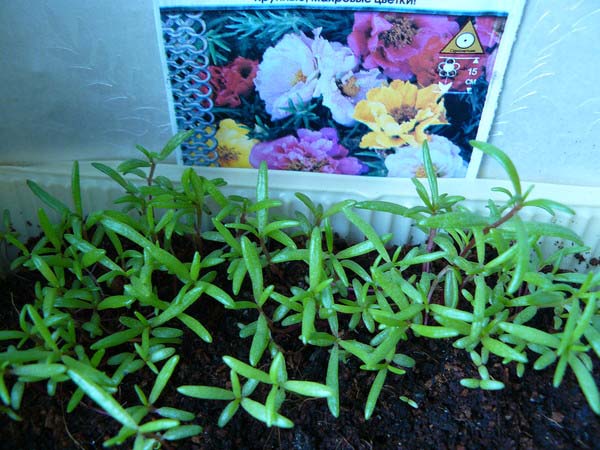
Content
Popular types and varieties of purslane
There are two types of purslane, of which the first (decorative) one will be discussed in our article:
- large-flowered (terry);

- garden.

It's funny, but in our garden plots we often fight against such a weed as garden purslane, which spreads on the ground, has medium-sized oblong thick leaves and blooms with small yellow inflorescences. But interestingly, its garden variety itself is not quite a weed, it is edible and, moreover, it is also quite useful, it contains a lot of carbohydrates and vitamins. It is even used as a medicinal plant and is used in the treatment of various diseases. Many interesting dishes are prepared with garden purslane, especially in the Caucasus.
For more information about the garden purslane, see the following video:
How to grow purslane: sowing dates, requirements and instructions for planting seedlings
Purslane is a thermophilic plant, therefore, for its earlier and longer flowering, it is first planted on seedlings.
But purslane seeds can also be sown directly into open ground in May-June, when the weather is warm. However, keep in mind that flowering will come much later than grown seedlings.
When to plant seedlings: timing
As a rule, purslane seeds are sown for seedlings. in March or April depending on the place of residence and climatic zone. So, in the South, they do it even a little earlier, at the end of February, but in the Middle zone (Moscow region) - from March, in the Urals and Siberia they are planted since April.
According to the lunar calendar in 2021
Choosing the best date for sowing seeds can help you Moon calendar.
So favorable days for sowing purslane for seedlings in 2021 according to the lunar calendar are:
- in February - 1-8, 10-20, 25-29;
- in March - 2-8, 10-14, 29-31;
- in April - 1, 2, 5-7, 9, 17-20, 24, 25;
- in May - 2-6, 15-17, 20, 21, 25-31;
- in June - 2-4, 7-9, 11-14, 16-19.
Unfavorable days according to the lunar calendar for 2021 for sowing purslane are the following dates (days of the Full Moon and New moons, as well as the period when the Moon is in Aquarius, because it is a barren and dry sign -italicized):
- in February -10-11, 27;
- in March -9-10, 13, 28;
- in April -5-6, 12, 27;
- in May -2-4, 11, 26, 30-31;
- in June -10, 24, 26-27.
Landing containers and soil
Well fertilized special soil is not required for purslane. He will feel fine in ordinary garden soil, mixed with a small amount of sand or vermiculite. Although it is still recommended to sow it in breathable and light soil. Therefore, high moor peat should be added to the soil (1 to 1) to loosen it thoroughly.
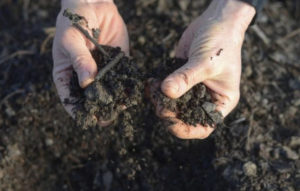
Purslane is very susceptible to disease black leg, therefore, it is imperative that the soil mixture is thoroughly roasted in the oven or steamed in the microwave.
Sowing seeds
Step-by-step instructions for planting purslane seeds for seedlings:
- Take a planting container and fill it with soil, but not to the very top. If the seedlings stretch out, then you will have the opportunity to pour soil under them.
- Align well and apply. And sprinkle with vermiculite a little.
- Moisten the soil with water. It is advisable to add hydrogen peroxide to the water at the rate of 1 tbsp. spoon for 0.5 liters of water. This will be a kind of growth stimulant for the seedlings. Alternatively, you can apply a slightly pink potassium permanganate solution.
- Sprinkle seeds on top of the soil. Because the seeds are very small, they can be mixed with sand and sown with a folded leaf or, so to speak, "salt" the earth with seeds.
- Now you need to sprinkle the seeds from the spray bottle. With the same hydrogen peroxide solution.
- Cover the planting container with a lid or cover in any other way (plastic wrap, plastic bag, or shoe cover).
- Place in a bright and warm place, where the temperature will be 25 degrees.
Video: sowing purslane seeds for seedlings
Caring for purslane seedlings after planting seedlings
The first friendly shoots, as a rule, appear in 5-7 days.
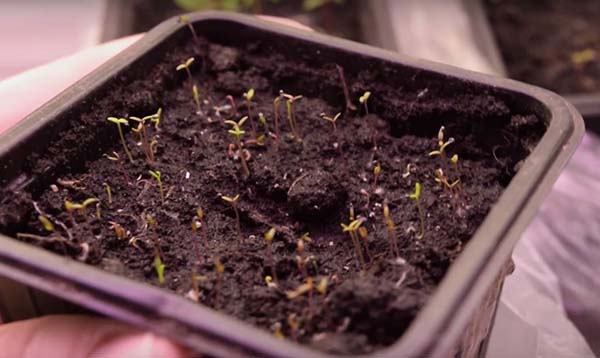
After germination, the seedlings will need to provide good lighting and moderate watering (without waterlogging the soil), the temperature can be lowered slightly, but it should still remain high enough, optimally - 20 degrees.
Long daylight hours are the main guarantee of the normal development of purslane seedlings, therefore it is recommended to supplement the planting with special phytolamps or ordinary LED analogs.
Experienced flower growers are advised to water the purslane through the pallet, and not from above, of course, as the surface of the earth dries.Such watering will ensure the growth of roots due to their desire for water.
Video: caring for purslane seedlings from germination to picking
Picking
When a pair of real and well-developed leaves appears at the purslane, you can begin to dive.
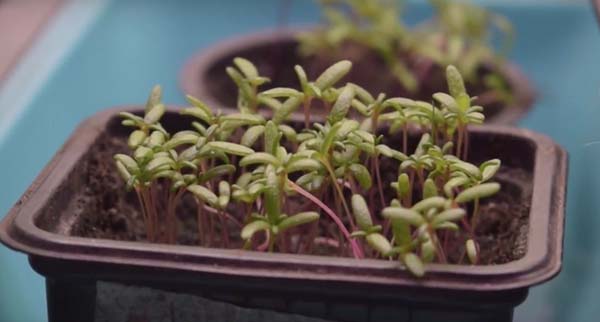
The process of picking purslane seedlings is as follows:
- We pour earth into containers (cups). No need to seal.
- In the middle we make a small hole for the seedling.
- We pick up several sprouts with the tip of a spoon along with the earth and put them in a pre-made depression.
- After that, carefully press the seedlings down together with the ground, and rake the soil a little from the sides.
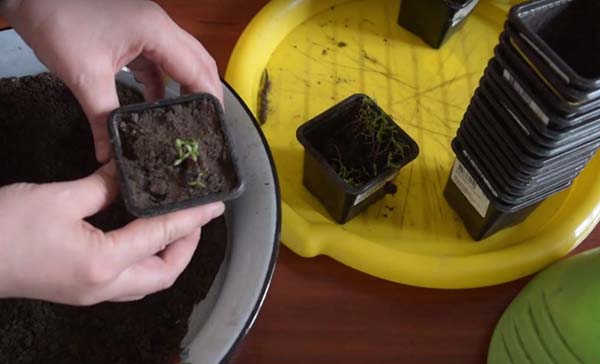
- After the purslane is completely unpacked, put the containers on a pallet and pour water into it. As you remember, watering is recommended in this way.
- As soon as the soil is saturated, the seedlings can be returned under the lamps.
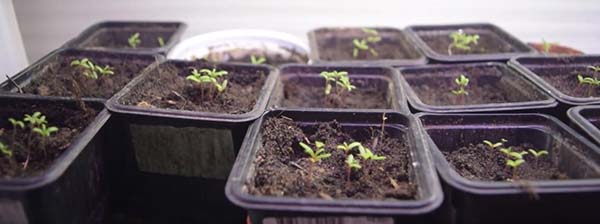
Video: picking a purslane
Further care of purslane seedlings after planting should include watering as the soil dries up, as well as maintaining stable light and temperature conditions.
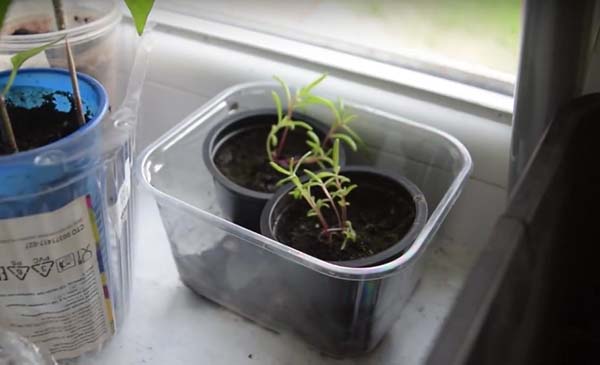
Planting purslane seedlings in open ground
Seedlings of purslane are planted in open ground only when the threat of recurrent frosts has passed. Thus, the optimal planting time is May-June, depending on the growing region. So, in the South, it can be transferred to open ground from the very first days of May, in the Middle zone (Moscow region) from mid-May, and in the Urals and Siberia - from June. This is due to the fact that it is a very thermophilic plant. If the temperature suddenly drops even below minus 10 degrees, then the leaves will begin to fall off.
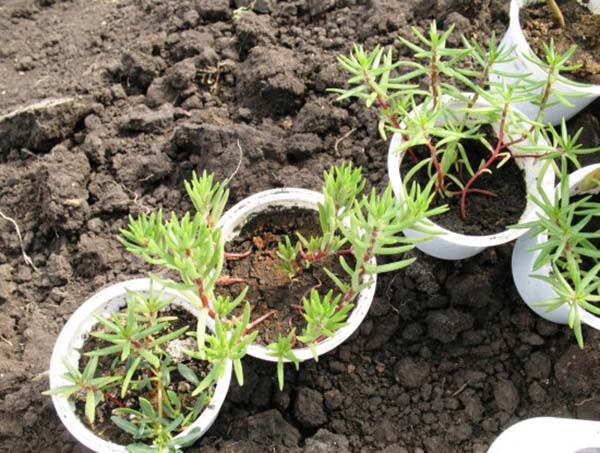
When planting, adhere to such a planting scheme so that the distance between the seedlings is about 15-20 centimeters.
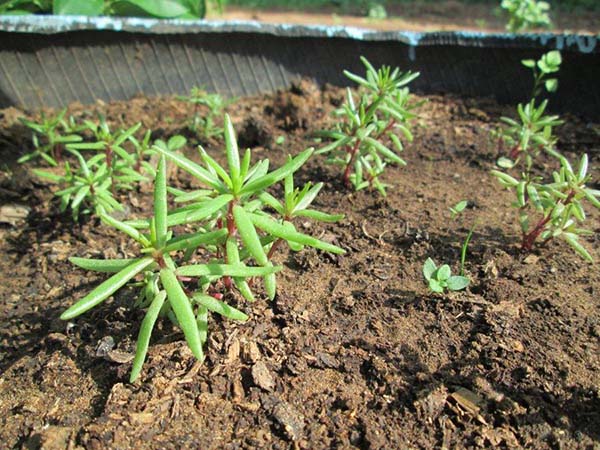
Sowing seeds or planting seedlings of purslane should be in well-lit areas, then the plant will show itself in all its beauty. Although, if you have a light partial shade, then this will also be acceptable for the plant, but the flowering will not be so abundant.
It is advisable to plant the plant on elevations (in flower beds), for example, next to the southern wall of your country house. The main thing is that the place where the purslane grows is sunny.
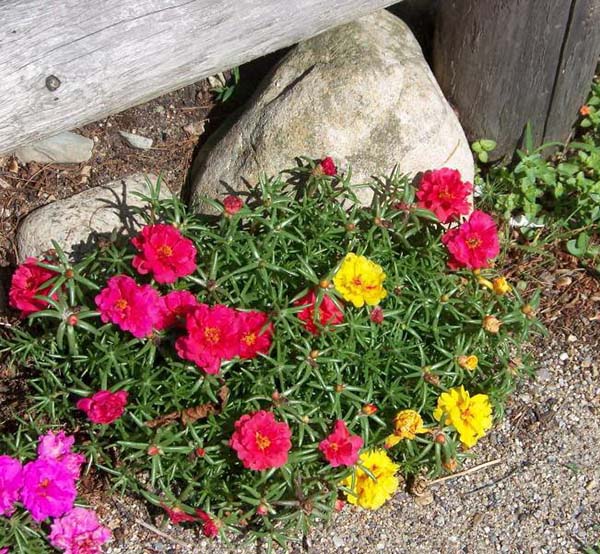
As for the soil, you cannot plant purslane in soil that was previously filled with humus or compost: the plant will grow green mass, and you may not see flowering. The plant is not demanding on fertility, it grows even better on dry sandy or rocky soils.
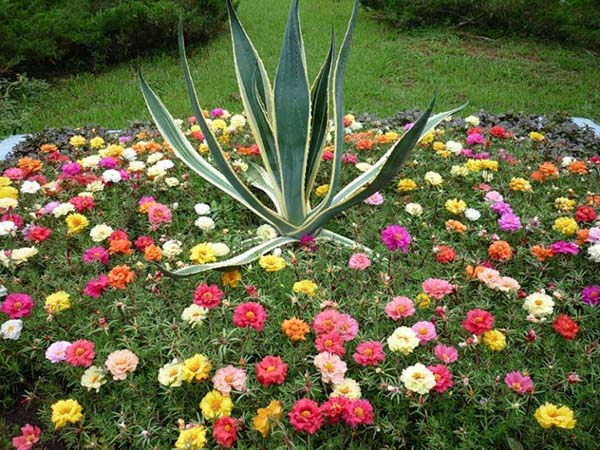
Purslane is great for decorating alpine slides and borders. It is also often grown in hanging pots, outdoor planters and balcony boxes. Some gardeners even sow it between the joints of concrete tiles, from which they lay out garden paths, which look very decorative when it blooms.
Outdoor purslane care
The most important thing in caring for a purslane is regular, but not too frequent watering, it will be enough about 1 time in 4-6 days. Naturally, on hot and dry days you need to water more often, but on the other hand, the plant can be called drought-resistant.
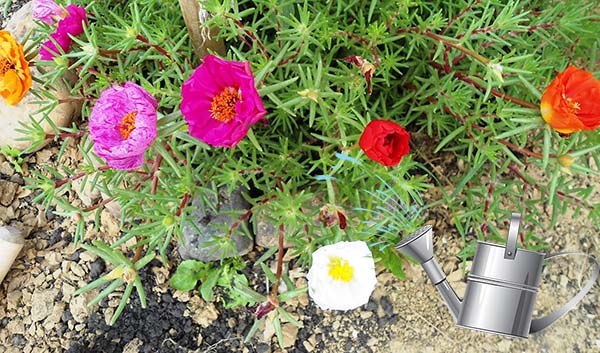
Purslane does not tolerate stagnant water, otherwise its decay may begin and, in general, it is very susceptible to fungal diseases, although it is resistant to all other diseases and even more pests.
If you suddenly notice small specks on the leaves or deformation of the shoots, then you need to quickly remove the damaged parts, and then spray it with one of the fungicides containing copper (for example, copper sulfate).
Purslane does not need feeding, because grows in both rich and poor soils. The main thing is that they are well lit.
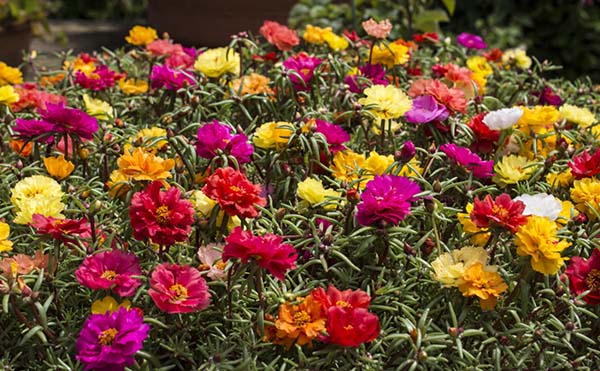
Thus, now you know how to plant and grow a purslane in your summer cottage. The plant is quite unpretentious, so even a novice gardener can cope with its cultivation and care.


Thank you!